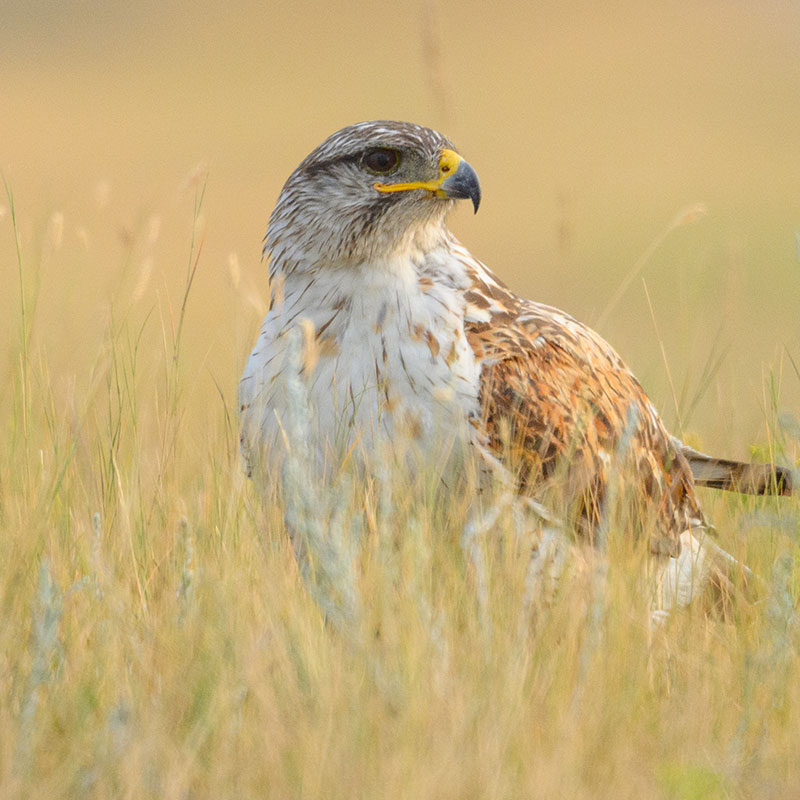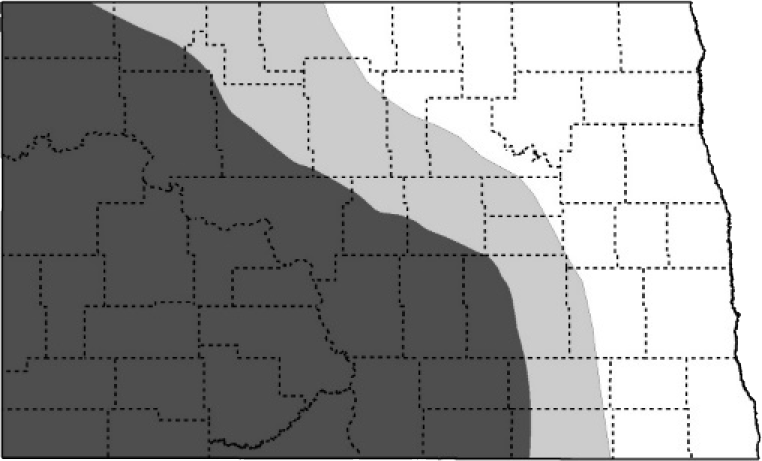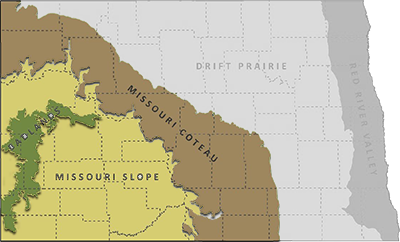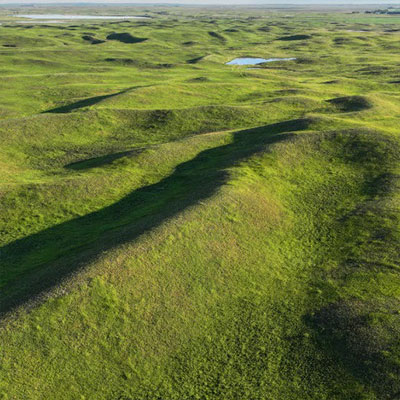Ferruginous Hawk

NDGF
L 23”, WS 56”, 3.5 lb. The largest hawk in North Dakota, it varies in coloration from almost completely white with a trace of reddish-brown, to nearly all dark brown.
Status in North Dakota
Occurs in North Dakota from mid-March to October. Peak breeding season late April to early July.
Reason for SWAP Designation
At-risk, ND range important (SGCN b.).
Global population breeding in ND: PIF estimate 3.83%, eBird estimate 3.41%. ND ranks 7th out of 16 states for highest percent of the global population (3.41%) during the breeding season (eBird).
The Ferruginous Hawk is stable to increasing in some parts of its range but has declined in ND.
Once the most common hawk in North Dakota, the Ferruginous Hawk has all but disappeared from many historical nesting areas.
Threats
Loss of grassland.
Degradation of grasslands from invasive plants, succession, and loss of diversity.
The destruction of Black-tailed Prairie Dogs towns in southwestern North Dakota and Richardson’s Ground Squirrel colonies east of the Missouri River due to poisoning, conversion to cropland, and other factors may
also negatively affect hawk populations.
Pesticides reduce prey availability and improper pesticide use may be directly harmful.
This species is extremely sensitive to human disturbance, will avoid nesting within 0.7 km of occupied buildings.
Disturbance of nest sites near development activities may lower reproductive success, cause nest abandonment, or reduce territory reoccupancy in subsequent years.
Some mortality from collisions with overhead lines or wind turbines, or electrocution.
Research and Monitoring
Habitat requirements and demographic studies have been broadly researched on the breeding grounds.
Additional information is needed on migration and wintering behaviors.
The Breeding Bird Survey, eBird and Partners in Flight Databases are key sources of information on distribution and population trends.
Management Recommendations
- Protect and conserve intact tracks of native prairie/unbroken grassland.
- When converting tree communities to grassland, leave a few individual trees or mosaic of trees.
- Minimize activity within 1 mile of active nests from late March to mid-August.
- Conscientious and appropriate application of agrochemicals.
- Follow beneficial or best practices during the design, siting, construction, operation, and maintenance of tall structures (e.g. transmission lines, communication towers, wind turbines).
- Use avian protection plans or guidance documents to minimize bird/powerline interactions.



